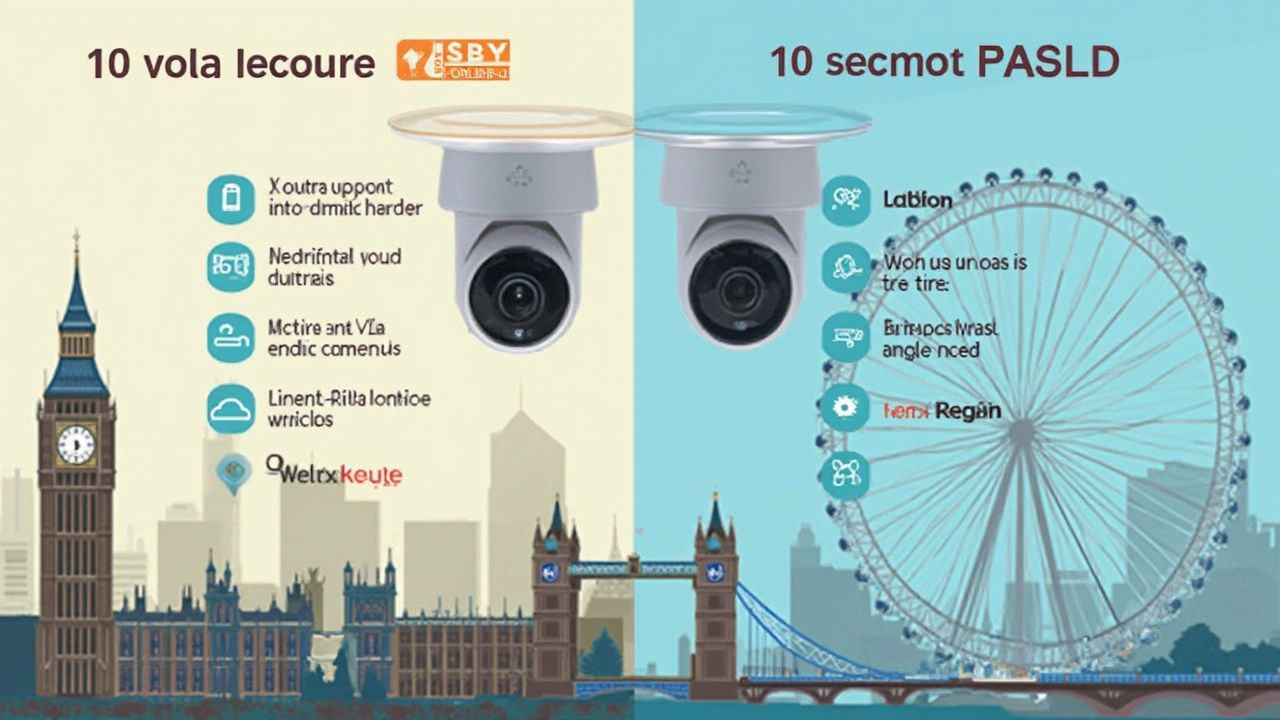When it comes to choosing security cameras for your home, the question of subscription requirements often pops up. Do you really need to sign up for an ongoing plan to keep your home secure? Not necessarily. The world of security cameras offers a mix of options, and understanding them can empower you to make the right choice without signing away a chunk of your monthly budget.
Some security cameras work perfectly without any subscription. These cameras typically offer local storage solutions like SD cards or hard drives, allowing recorded footage to be saved without any added monthly costs. They're a good fit if you're looking to avoid paying ongoing fees. But wait, there’s more to consider.
On the flip side, subscription-based cameras often provide cloud storage, keeping your videos safe from potential physical tampering. They'll also throw in extra features like person detection, advanced motion alerts, and even access to longer video history. It’s a question of what you value more: minimizing costs or boosting security features. However, not every home needs all these bells and whistles.
- Exploring Subscription-Free Cameras
- Understanding Subscription-Based Features
- Balancing Cost with Benefits
- Making an Informed Decision
Exploring Subscription-Free Cameras
Subscription-free security cameras have become a hit for folks looking to secure their homes without extra monthly expenses. These models give you everything you need without tying you down to a plan. But what exactly are you getting?
These cameras rely heavily on local storage. Think of SD cards or even larger setups like network video recorders (NVRs). When the camera captures footage, it gets stored directly on these devices. Simple, right? This means you don't rely on cloud storage, which is often where subscription models hit your wallet. However, storage management becomes your responsibility—once it fills up, you either upgrade your storage or start deleting old footage.
Benefits of Going Subscription-Free
First off, cost savings. Let’s be real—even a low subscription fee adds up over time. Secondly, you're not dependent on internet speed for storing videos, which could be a big win if you live in an area with patchy Wi-Fi.
Limitations to Consider
But there are drawbacks too. Without the cloud, there's a risk that if someone gets hold of your camera, they'll also grab your footage. Additionally, without a subscription, you often miss out on fancy features like enhanced motion detection or object recognition. You get what you pay for, right?
Popular Subscription-Free Models
You might want to look into options like the Arlo Pro 2 or EufyCam 2C. Both well-known names in the industry and they offer decent features without a mandatory subscription.
Hopefully, this breakdown helps you get a sense of whether a subscription-free camera works for you. But remember, it’s all about what fits your lifestyle and budget best. No hidden fees, just straightforward security.
Understanding Subscription-Based Features
Subscription-based security cameras might come with an added cost, but they also pack a punch when it comes to features. These services often set themselves apart from subscription-free models by offering access to the cloud. But what exactly does that mean for you?
With cloud storage, you never have to worry about your footage being lost due to theft or damage to the physical storage device. This is a big plus, especially if you live in an area with frequent break-ins or severe weather. Also, it's not just about keeping your footage safe—subscription plans often enable longer storage periods, so you can access older recordings easily.
Extra Features to Consider
A real draw of subscription services is the extra smarts they bring to home security systems. Advanced features like person detection, which distinguishes between humans and everything else—like pets or falling leaves—can cut down on false alarms big time. Some services even offer facial recognition, identifying familiar faces and sending you fewer but more meaningful alerts.
"Subscription plans are worth the investment for those who prioritize high-level security and convenience," says Emma Gordon, tech analyst at SecureTech.
Is It Worth the Cost?
The question you need to ask is, do these added features justify the extra monthly or yearly fee? Let's say you have a large property. In that case, features like automatic zoom, tracking a suspected intruder across the yard, and sending real-time alerts to your phone can be invaluable.
| Feature | Subscription-Based Cameras |
|---|---|
| Cloud Storage | Yes |
| Person Detection | Advanced |
| Facial Recognition | Optional |
So, while it might feel like just another expense, these subscriptions can offer peace of mind. They’re particularly advantageous if you can swing the costs and can't afford any lapses in your home’s security.

Balancing Cost with Benefits
When considering home security systems, figuring out how much you're willing to spend is a crucial step, but it’s not just about being frugal. You need to weigh cost against the advantages that come with different types of security cameras. Striking the right balance can save you money and enhance your peace of mind.
Cost-Effective Solutions
Subscription-free cameras often save you from extra costs. These tend to work with local storage and avoid those pesky monthly fees, making them appealing if you're budget-conscious. Just pop in a memory card or connect a hard drive, and you’re good to go. But keep in mind, should your camera be tampered with, recorded data can be compromised.
Subscription-Based Cameras
On the other hand, subscription-based options might look costly upfront, but think of them as an investment. The added features like cloud storage protect your footage against local tampering and mishaps. Plus, access to specialized features like motion detection can lead to quicker responses to potential threats.
| Feature | Subscription-Free | Subscription-Based |
|---|---|---|
| Local Storage | Yes | No |
| Cloud Storage | No | Yes |
| Advanced Alerts | Limited | Yes |
| Footage Security | Physical risk | Protected |
Finding the Middle Ground
If money's tight, consider starting with a subscription-free camera and reassessing your needs as you go. Alternatively, some brands offer tiered subscription plans, allowing you to pay for only the features you value most. Whether it’s local storage or enhanced security, pinpoint what fits your lifestyle and risk tolerance.
Remember, the best home security system is one that balances cost and necessity, giving you safety without stretching your budget too thin.
Making an Informed Decision
Deciding on whether to choose a subscription-based or subscription-free security camera can seem tricky, but breaking it down makes it simpler. You've got to weigh what features you really need against what you're willing to spend. So how do you make the right call?
Identify Your Security Needs
First, consider what level of security you actually need. If you're mostly concerned about monitoring deliveries or keeping an eye on pets during the day, a basic subscription-free model might do the trick. These often include essential features like motion detection and night vision, which can suffice for everyday use.
Understand the Cost VS Benefit
Subscription-based models typically cost anywhere from AUD$3 to AUD$20 per month. That might sound like a lot, but it usually includes handy features such as cloud storage, which can be accessible anywhere, or advanced detection capabilities that can distinguish between a human intruder and a squirrel. Weigh these benefits against the price to see if they align with your priorities.
Data and Feature Comparison
If visuals help, here's a simple breakdown comparing subscription benefits:
| Feature | Subscription-Free | Subscription-Based |
|---|---|---|
| Local Storage | Yes | Optional |
| Cloud Storage | No | Yes |
| Person Detection | No | Yes |
Knowing these differences helps you see where your money goes and decide what matters most to you.
Consider Flexibility
Another factor to keep in mind is the flexibility of subscription plans. Some companies offer month-to-month plans rather than long-term commitments, which can be a great way to trial services and see if you find value in them over time.
Ultimately, the decision should align with your home's security goals and your comfort with technology. By thinking through these factors, you can make a smart, informed decision that suits your lifestyle and budget.

